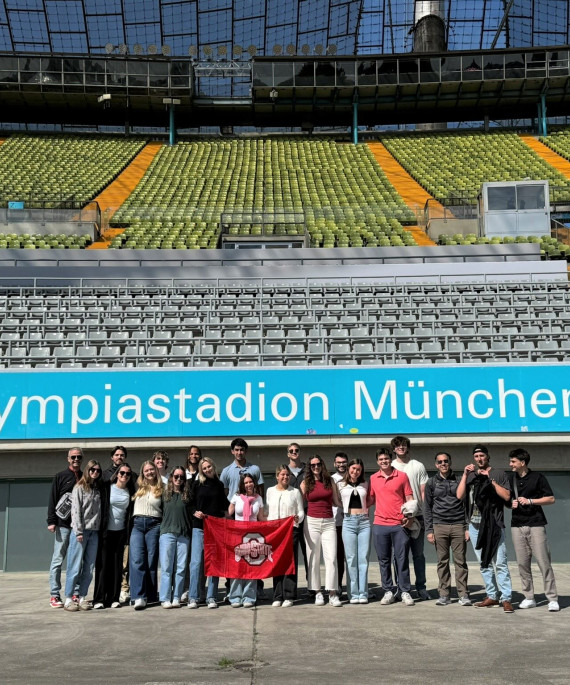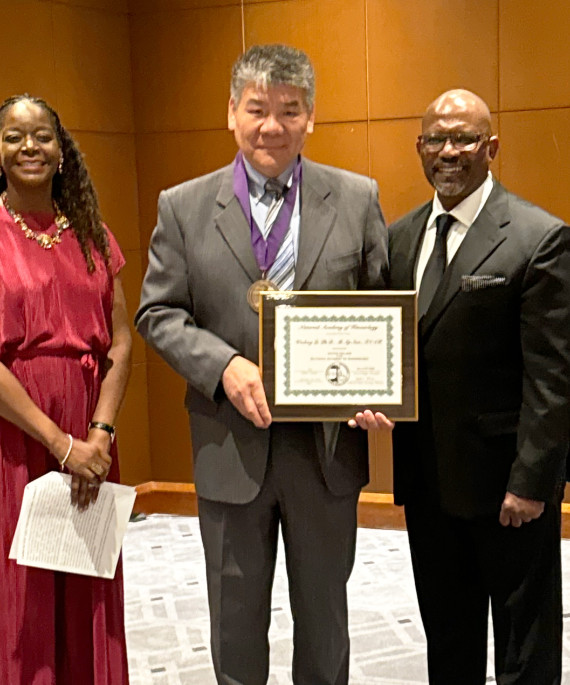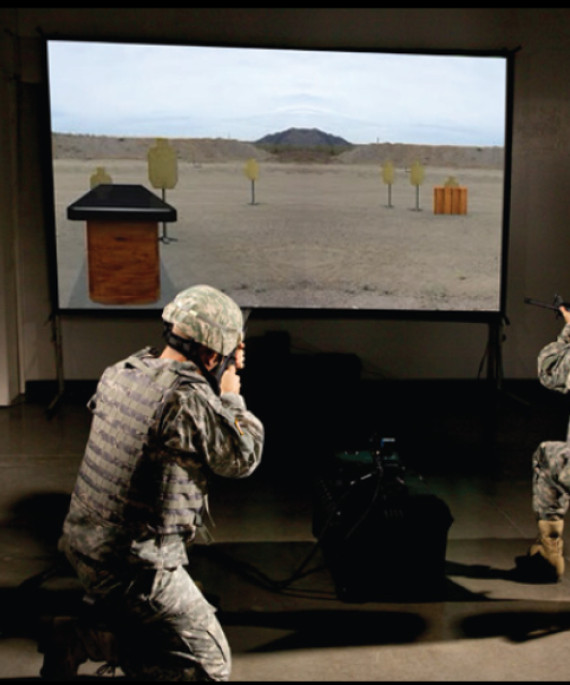
Preschool-age children are naturally active. They like to run, jump, hop and skip.
So why do we need to help them practice being active?
“If young children don’t develop movement skills by ages 7 or 8, especially in manipulating objects such as bats and balls, they’re cognitively sophisticated enough to realize they’re not physically competent,” said Jackie Goodway, professor of kinesiology.
Goodway’s studies show that children who are not active on the playground have low movement competence and low self-esteem about their abilities. They tend to become sedentary and overweight, which puts them at greater risk for diseases such as diabetes.
If children develop important basic motor skills early, such as throwing, catching, running and jumping, as well as have lots of practice with equipment, such as balls, rackets and more, they are more likely to stay active throughout their lives and be a healthy weight.
“So let’s not take beta blockers and lipid drugs to stay healthy,” Goodway said. “Let’s set kids up for success by getting them moving early.”
Goodway shares four steps to help preschool-aged children build a foundation for lifelong physical activity.
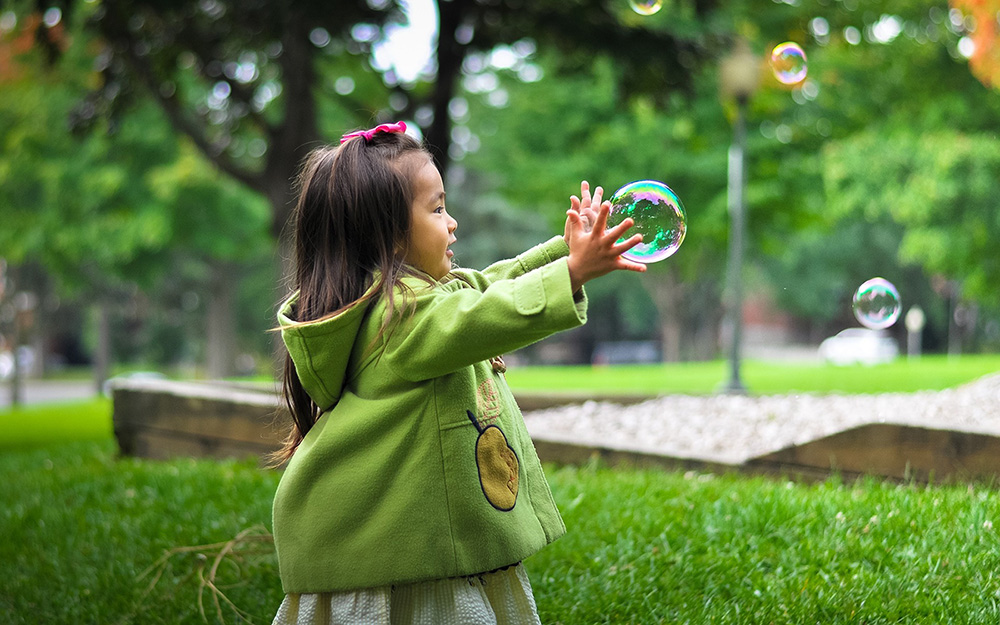
Step 1: Encourage children to practice big muscle skills
As soon as children can walk – up to 18 months – Goodway recommends that they have fun being active. Because kids enjoy being active with adults, involve the entire family. Whether indoors or outside, in games or play.
Give children the chance to practice essential locomotor skills, which are walking, running, hopping (on one foot), leaping (from one foot to the other), jumping (take off from and land on two feet), skipping, galloping and sliding (a sideways gallop used in games such as tennis).
Get moving together, both indoors and outside.
Propose to the child, “Let’s run to the slide or to the kitchen. Let’s hop on one foot to the swings or the stairs. Let’s blow bubbles and chase them.”
Bring balance into it. Propose to the child, “Let’s walk across the balance beam at the playground. Or along a tape measure on the living room floor. Let’s walk on our tiptoes around the room.”
A fun idea from Goodway is to create an obstacle course for your child that uses several different locomotor skills. And be sure to build movement into your everyday routine.
Create a fantasy world for activities.
“Young children love pretending to be an astronaut or favorite TV character or a clown,” Goodway said. “Take a favorite movie and rather than throwing the ball, we’re in Frozen and we’re throwing a snowball.”
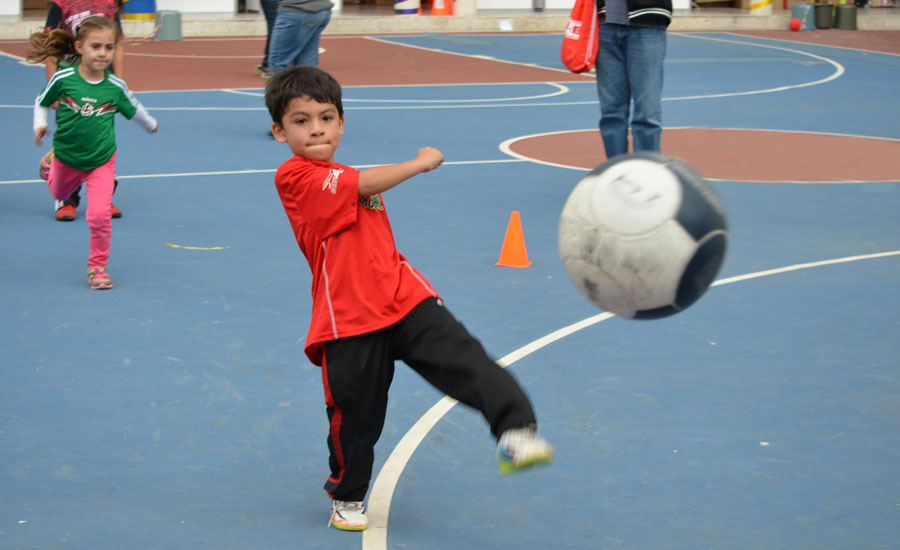
Step 2: Bring simple sports equipment into the mix
Catching, throwing, kicking, hand dribbling (as in basketball), foot dribbling (as in soccer), rolling the ball, striking the ball by hand or with bats, rackets, golf clubs, lacrosse and hockey sticks — these skills all require practice to develop control.
Goodway’s research on child development shows that skill in using sports equipment, even simple items, predicts physical activity in adolescence.
Beginning at about age 3, build in regular opportunities to practice these skills.
For instance, Goodway suggests playing catch with a soft toy such as a teddy bear. If the child can catch the bear three times in a row, take a step back and do it again.
Gather some basic supplies for your child, such as beanbags, a plastic ball and bat, a small, light beach ball.
“Practice tossing a beach ball to each other, starting with a short distance and increasing it, “Goodway said. “Practice throwing the beanbag overhand and underhand. Encourage practicing different strikes with a plastic bat. I used to give my daughter an empty, plastic milk jug to practice kicking on the kitchen floor.”

Step 3: Practice multiple skills at the same time
Goodway recommends creating activities to practice dual-processing skills, which combine thinking tasks with physical activity.
When playing a game of catch, for instance, practice counting numbers or saying the alphabet. When tossing balls of different colors, say the color as you catch the ball.
Create activities that are more complicated.
For instance, put a pile of beanbags on one side of a room. Tell the child to run from the opposite side of the room to the pile and pick up a beanbag that is not blue.
Add more activities to make a series. Ask the child to pick up the non-blue beanbag, toss it in the air three times and catch it, return the beanbag to the pile and run back.
Create a scavenger hunt that combines thinking and physical activity.
When Goodway’s daughter was young, they cut out pictures of food from magazines and attached them to paper plates. Or they wrote numbers or alphabet letters on the plates. Her daughter closed her eyes and counted to 20 while Goodway hid the plates around the house. While preparing dinner, Goodway would give instructions like these:
- Find a plate with a vegetable.
- Pick up a strawberry.
- Pick up something that’s not a vegetable.
Her daughter was running, finding the plate, bringing it back and having fun in the process.
Get your child into a multi-skills program.
“I would strongly suggest that in the preschool years, if you have the resources, get your child into a multi-skill program where they’re going to run, hop and catch,” Goodway said. “If that’s not available, some structured playtime with an adult can be beneficial.”
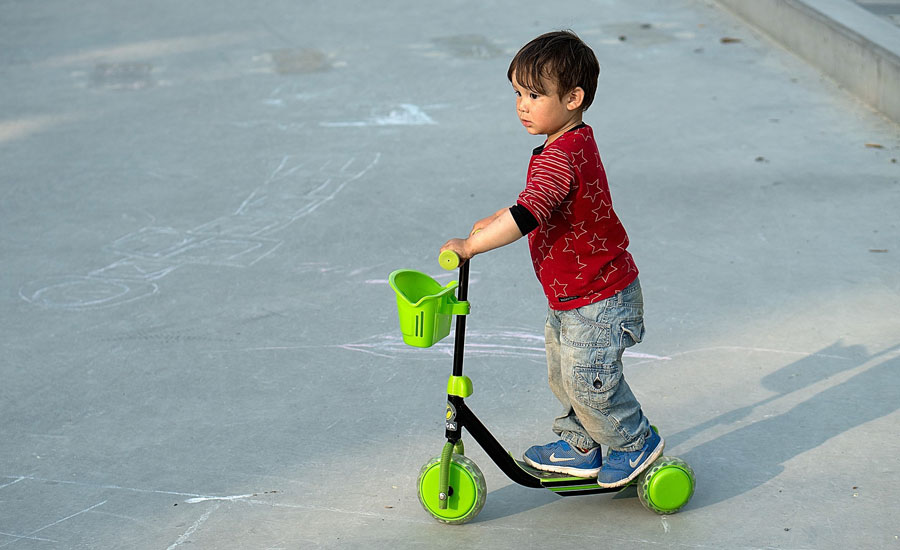
Step 4: How much time to spend?
For optimal development, begin building in regular opportunities for your child to practice these skills.
For preschoolers, the goal is 60 minutes of structured physical activity a day with an adult facilitating. The 60 minutes does not need to be in one block. It can be accumulated time across the day.
Young children also should have 60 minutes – and up to several hours – per day of unstructured physical activity, for instance on the playground. Except when sleeping, they should not be sedentary for more than 60 minutes at a time.
When practicing catch, kicking a ball or other object manipulation skills with 3- to 5-year-olds, limit play to 30-45 minutes or stop when they tire or lose interest in the activity.
The key to all physical activity is to do it together and make it fun.
Jackie Goodway chaired the SHAPE America initiative to update its children’s physical activity guidelines.

